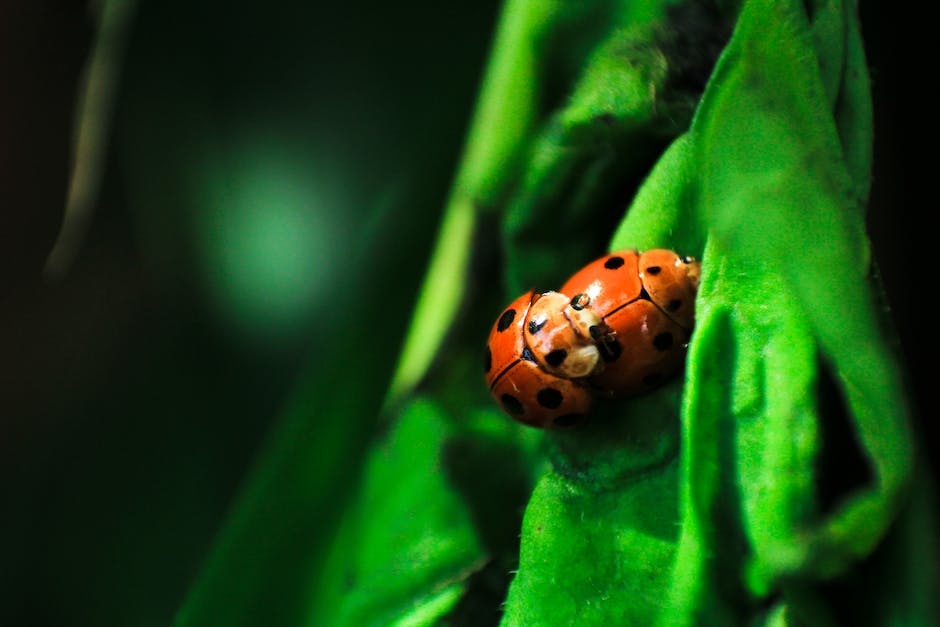Have you ever heard of a helpful insect that brightens up the garden with its beauty and its helpful ways? Ladybugs, also known as lady beetles or ladybirds, are small, attractive insects that offer a variety of valuable services for gardeners and farmers. In this article, we’ll take a look at the remarkable abilities of these little ladies, and the important role they play in the environment.
What Are Ladybugs?
Ladybugs are small, round beetles usually ranging from one to ten millimeters in length. They are easily identifiable due to their bright red, yellow, or orange color, although they can also be black or brown. Ladybugs are part of the Coccinellidae family, a large genus of insects that includes more than 6,000 species.
Where Do Ladybugs Live?
Ladybugs are found all over the world, but are particularly populous in temperate and warm climates. They are especially common in gardens, fields, and orchards, where their presence helps to protect the plants from pests.
What Do Ladybugs Eat?
Since ladybugs are omnivores, their diet consists of a variety of foods, including aphids, mealybugs, scales, mites, and other small insects. They also feed on pollen, nectar, and algae in order to obtain essential proteins and sugars.
Do Ladybugs Bite?
Ladybugs are actually harmless and are not known to bite or sting. However, certain species of ladybugs, such as the Mexican bean beetle, may bite if they feel threatened.
Benefits of Ladybugs
Ladybugs are great for the environment, because they act as natural pest control agents. By eating aphids, mealybugs, and other pesky insects, they help to protect crops and other plant life. Additionally, ladybugs are known to pollinate flowers, giving them their vibrant color and helping them to produce various fruits.
What Is the Lifespan of A Ladybug?
The average lifespan of an adult ladybug is about one year, though some species may live up to three years. The mortality rate of ladybugs is quite high, with the mortality rate estimated to be as high as 90% over the course of one year.
Do Ladybugs Carry Diseases?
No, ladybugs are not known to carry any diseases. However, certain species of ladybugs may host parasites, such as mites or ticks. Some species of ladybugs may also sometimes transmit fungal and viral diseases to humans, plants, and other animals.
Are Ladybugs Friendly to Humans?
Ladybugs are friendly and harmless to humans and do not cause any harm. In fact, ladybugs have long been a symbol of luck and prosperity, and seeing one is considered to be a good omen.
People Also Ask
How Do Ladybugs Survive The Winter?
Ladybugs use a number of strategies to survive the cold winter months, including hibernation, migration, and aestivation. During the winter, they may congregate in large numbers in sheltered areas, such as under rocks or inside buildings.
How Can I Attract Ladybugs to My Garden?
You can attract ladybugs to your garden by planting a variety of flowers and herbs, such as dill, fennel, and cilantro. Additionally, leaving piles of debris or dead leaves around your garden will provide a cozy home for ladybugs.
Do Ladybugs Have Any Natural Enemies?
Yes, ladybugs do have natural enemies, including birds, rodents, spiders, and certain species of wasps. Some of these predators may even hunt ladybugs in large numbers, which can decimate the population of ladybugs in a given area.
How Many Eggs Does A Ladybug Lay?
A female ladybug can lay up to 50 eggs at a time, though some species may lay up to 100 eggs during a single mating season. The eggs are usually yellow, orange, or red and are usually laid in clusters on the leaves of plants.
What Are Some Other Names For Ladybugs?
Ladybugs are also known as lady beetles or ladybirds, as well as Coccinellidae or Coccids. In addition, other nicknames for ladybugs include ladyclock, lady cow, and lady fly.
Final Words
Ladybugs are beneficial insects that are beneficial for both people and the environment. Not only do they help to protect crops and other plants from pests, but they also provide a natural form of pest control. Ladybugs are beautiful creatures that should be appreciated and admired in any garden or home.

